Because trains are the dominant means of transportation for people in Japan, the areas surrounding major train stations are prime real estate. The amount of urban development and connectivity in some of these neighborhoods is simply incredible.
For example, around Osaka/Umeda Stations in the northern part of Osaka, there’s a complex network of footbridges and underground tunnels that connect multiple train stations and over a dozen skyscrapers. From our hotel at one end, we could walk over a mile and reach hundreds of stores and restaurants without having to stop at a traffic light. The civil engineering helps reduce congestion in the streets, shield the public from the elements, and provide vertical space for maximizing land use. I absolutely love it and wish more cities around the world would follow suit.
In the Silicon Valley, we hear the word “collaboration” a lot. However, Americans focus a great deal on private vs. public, mine vs. yours, etc., and have the tendency to insist on the minimum amount of resource sharing. Where the Westfield Mall connects underground to Powell BART Station, for example, the divide is clear, the different levels of upkeep is visible, not to mention the doors are usually closed. The same idea is executed quite differently here in Osaka – train stations operated by public and private companies, office towers and commercial buildings managed by an assortment of private enterprises, somehow are able to seamlessly integrate into one system. When underground, it’s often hard to tell where one building ends and another begins. Everything just feels like one harmonious community.
Along the same train of thought was the observation that most restaurants we went to did not have their own bathrooms. Because they were part of a mall, train station, or underground path, they shared facilities with other businesses in the vicinity. I’m no expert in bathroom management, but would assume that it’s more space and effort efficient for ten restaurants to share 20 public stalls, than for each restaurant to take care of two private stalls. From a customer perspective, it’s also nice that the waitress doesn’t have to wash toilets. It’s a stark contrast to the American mentality where businesses must figure out every ancillary responsibility from parking, garbage disposal, to employee health care.
DOTONBORI
Dotonbori is a canal that runs across downtown Osaka, and the name usually refers to the ultra-touristy commercial district alongside it. It’s full of restaurants and entertainment and, being at the heart of everything touristy, it’s within walking distance from “Ginza of the West”, “Akihabara of the West”, and “Harajuku of the West”. For those not above tourist traps there’s also a sightseeing boat that runs frequently on the canal. The closest resemblance I can think of is Singapore’s Clarke Quay, though Dotonbori still reflects the local culture and is not as pretentious.
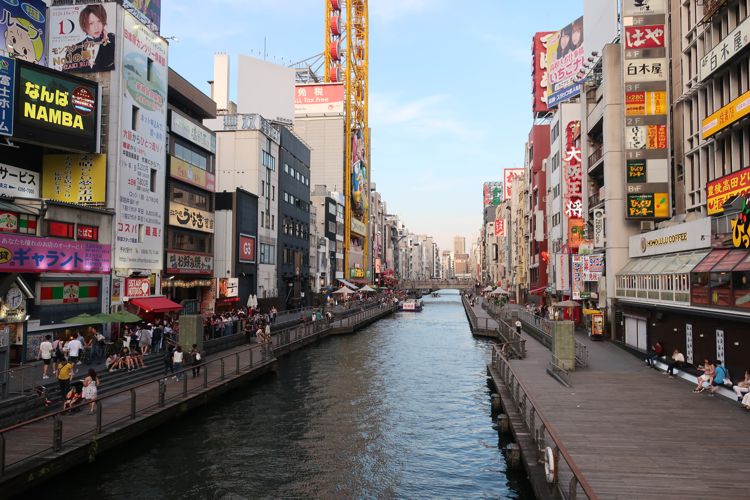
Dotonbori the canal
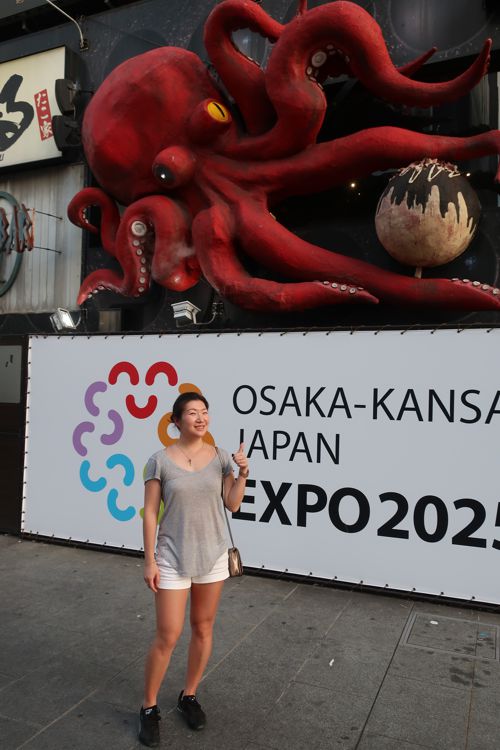
A giant cannibal octopus
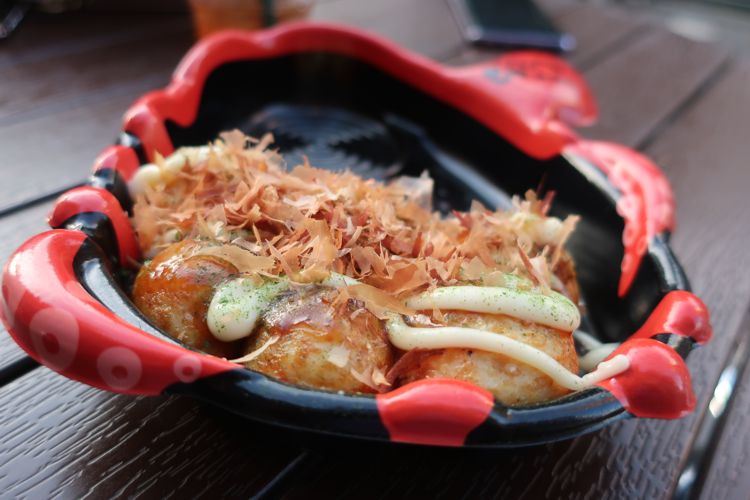
Had to get some takoyaki while in Japan
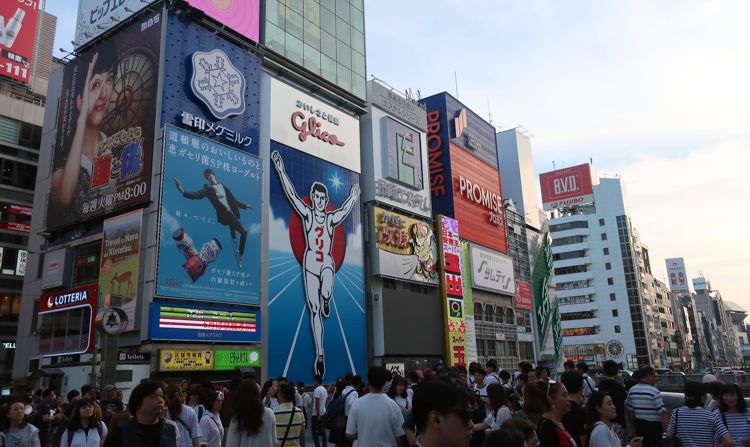
Glico Man, a symbol of this city
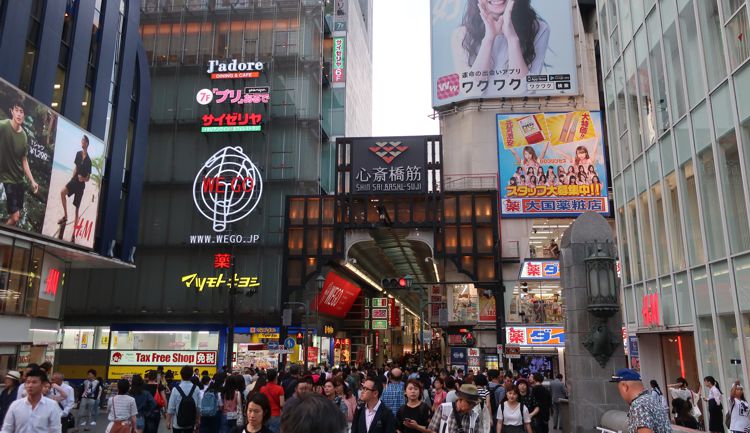
Southern entrance to Shinsaibashi, the Ginza of the West
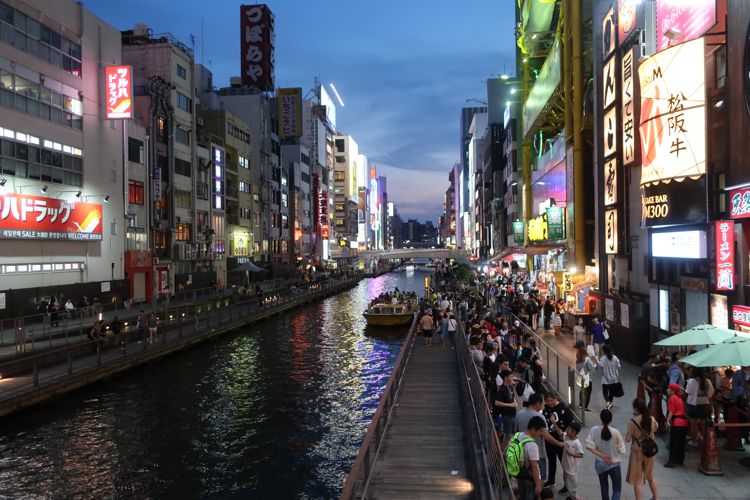
Dotonbori at night
GUDETAMA CAFE
Japan is famous for themed cafes and restaurants. They tend to be fun and great for photos, and serve overpriced bad-tasting food. For fun, we looked up what Osaka had to offer, and decided to make a stop at Gudetama Cafe. Gudetama is a Sanrio character. It’s egg-shaped and has the personality of the laziest couch potato. We were committed to order the minimum amount of stuff that we had to. Thank goodness, because the two lattes were terrible.
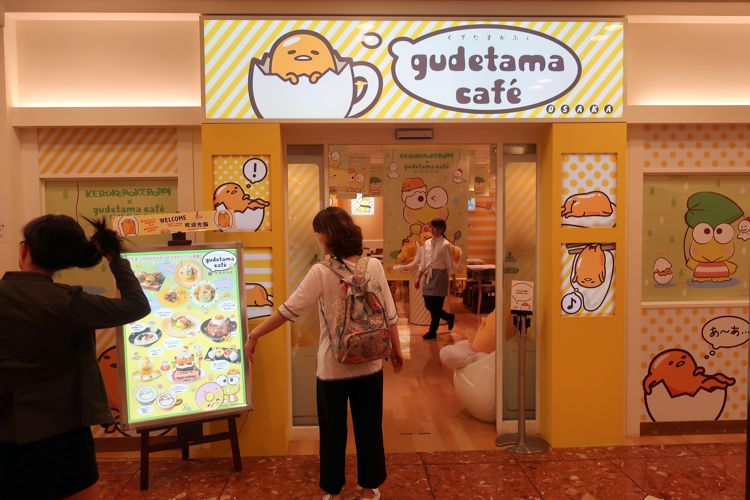
Gudetama Cafe entrance
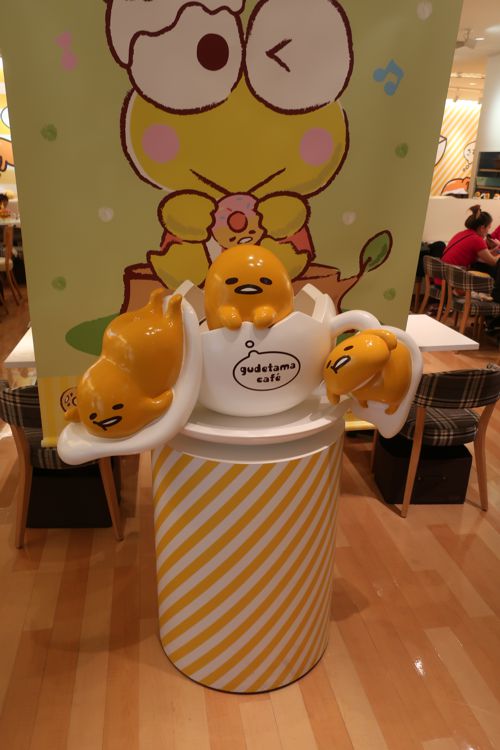
That froggy character was making a guest appearance
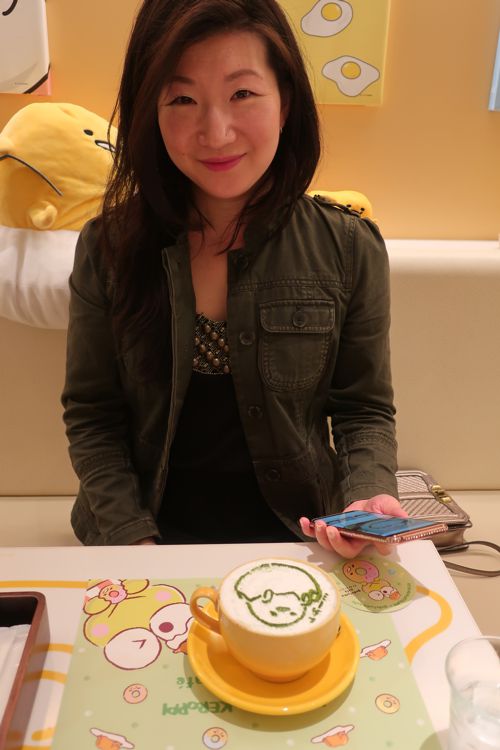
Matcha latte
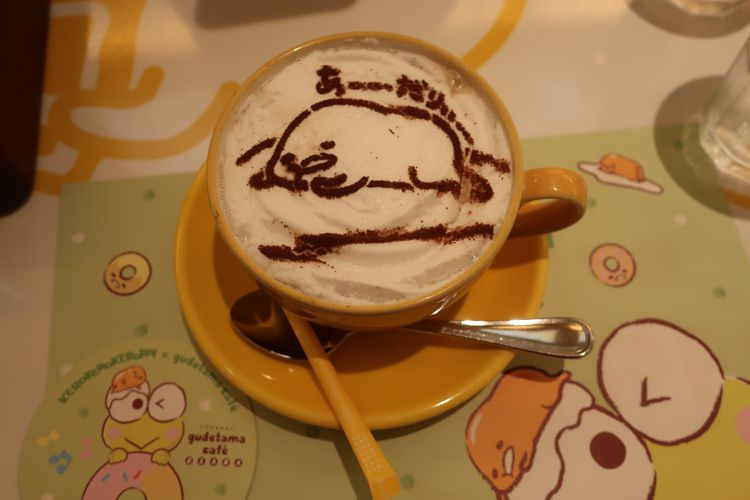
I ordered this drink based on its latte art design
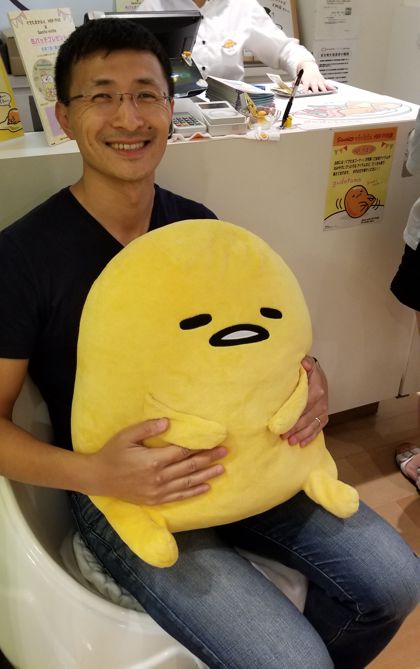
I need this guy in my office
KUROMON MARKET 黒門市場
Kuromon is a famous traditional market in Osaka, where you can watch people grocery-shop and buy cooked food. Honestly, though, it was probably more of a tourist attraction than anything.
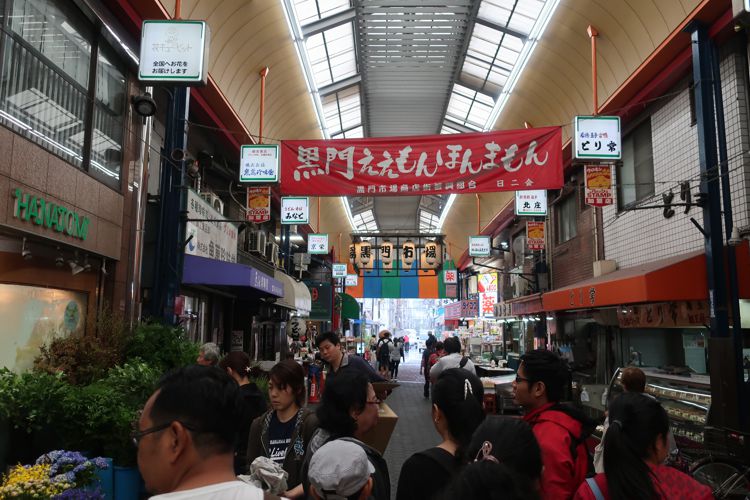
Kuroman Market
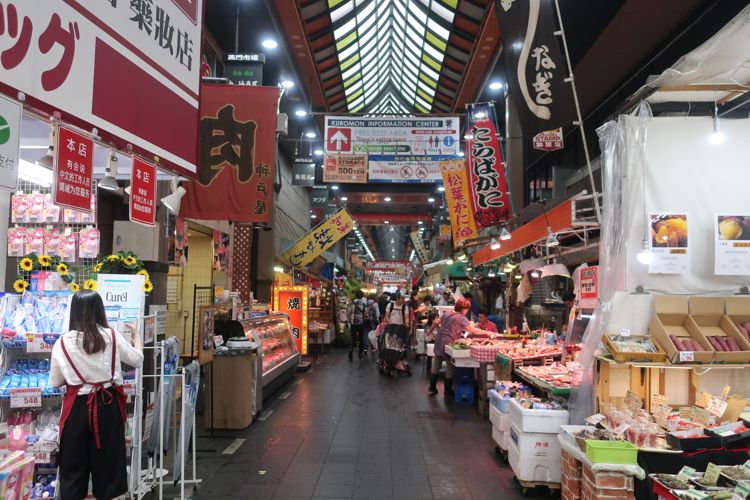
Kuromon Market
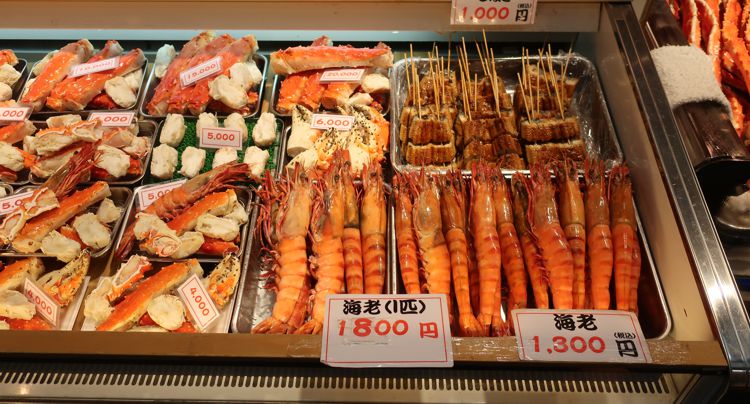
$18 for a single grilled shrimp? Holy moly! And who comes to a market and drops $60 on a plate of crab claws?
DOGUYASUJI
Doguyasuji, steps from Kuromon, is a covered shopping arcade. They sell kitchen and dining ware here and appear to cater mainly to the restaurant business. We came here looking for a matcha whisk for Vic. The stores were fascinating and overwhelming.
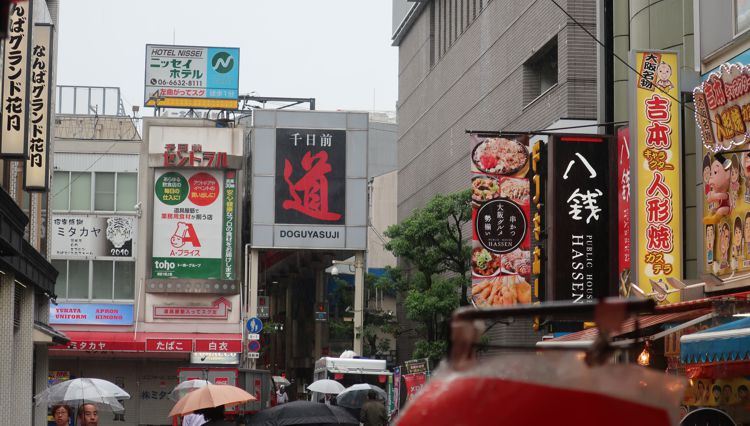
Northern entrance to Doguyasuji
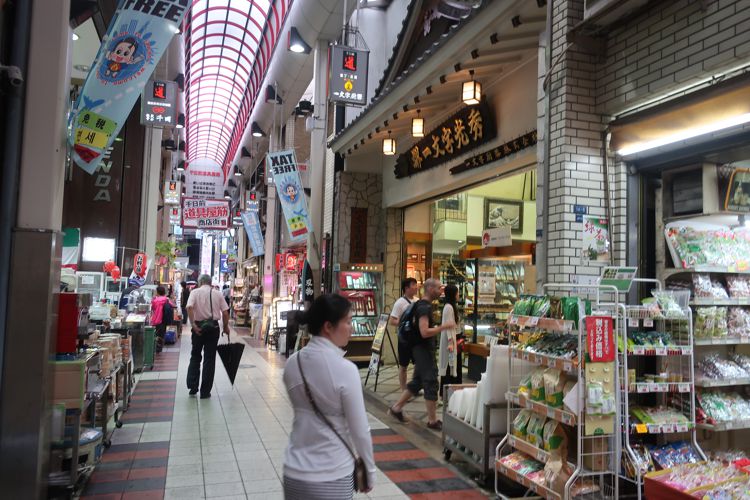
Hong wondering where to find a matcha whisk
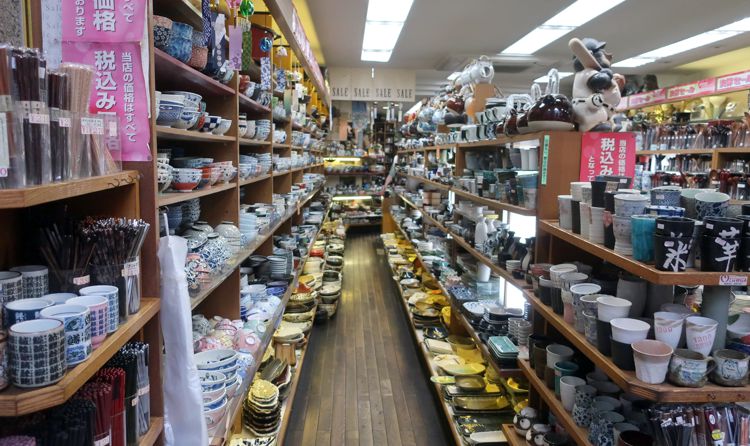
It was scary walking with a backpack in stores like this. So many breakable things!
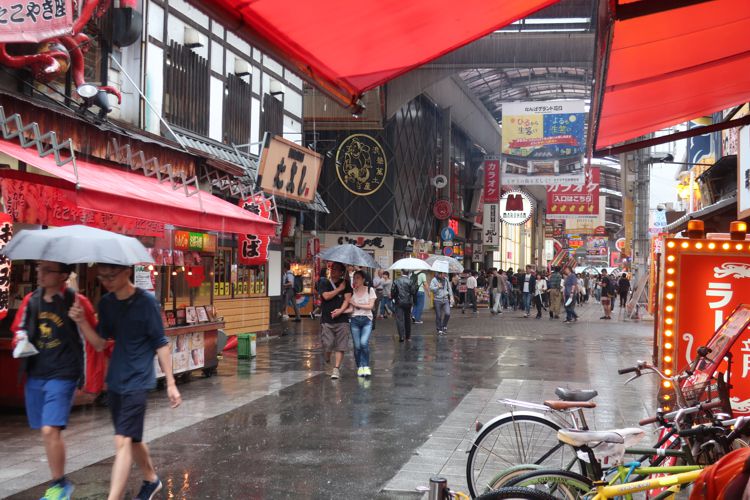
It was raining hard. Good thing we didn’t get this weather in Nara
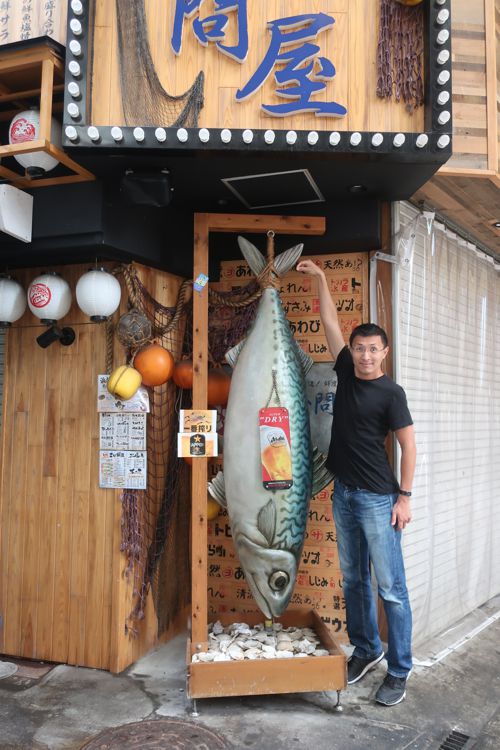
Big fish 🙂
NAMBA PARKS
Namba Parks is one of the many multi-story urban malls in Japan, adjacent to the gigantic Namba train station. It’s big and has nice stores, but it’s noteworthy mostly for its architecture. Its tiered rooftops are densely covered with trees and make the whole structure look like a hill among the urban jungle. It functions as a garden for the shoppers. The gap between its two buildings are colored to resemble a canyon with layered mineral sediments, like Zion. It’s a genius design. Unfortunately it rained quite a bit on the day of our visit, so we couldn’t enjoy much of its exterior.
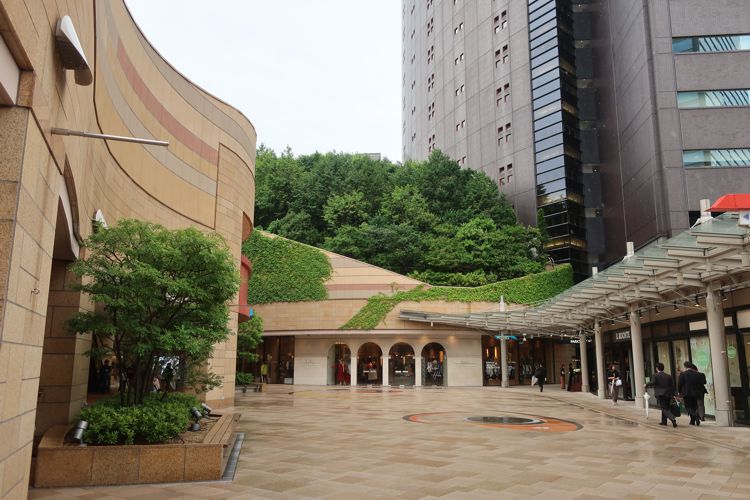
Namba Parks
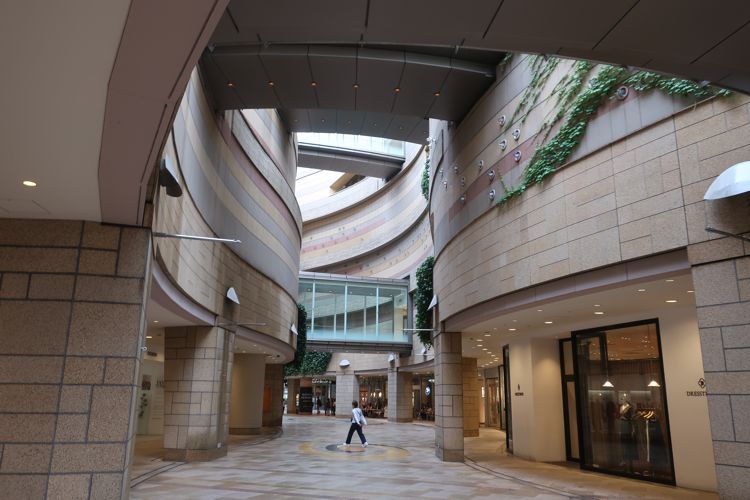
Namba Parks
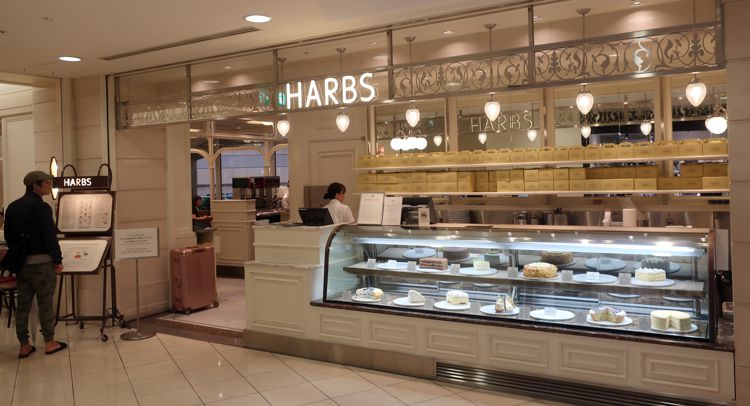
HARBS, a high-end desserts bakery recommended by my sister
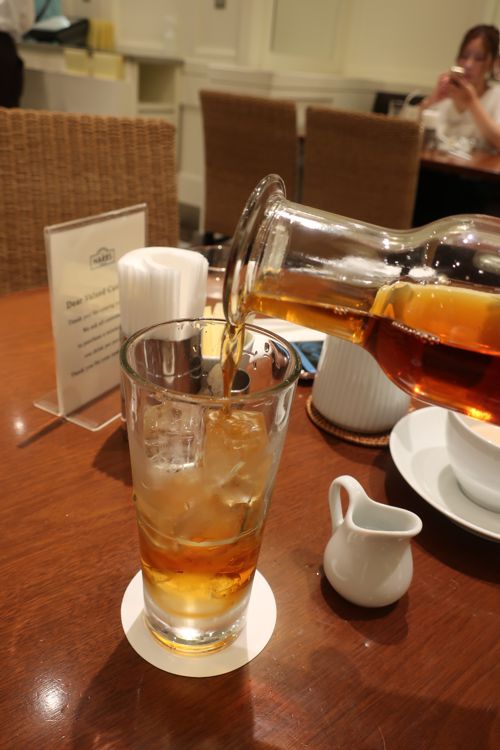
Expensive iced tea because everyone is required to order a drink
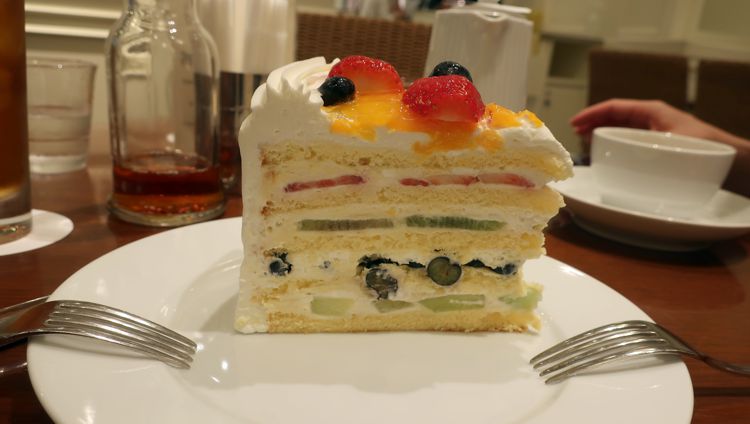
Exquisite layered fruit cake. Fresh, fluffy, and not too sweet
Pacific Islands 2018 Index
- Hawaii Four-O
- Surf & Turf Adventures
- Island Eats
- On To Japan
- Osaka via Shinkansen
- Castle Day
- Deer & Whale Shark
- Osaka Urban Hangouts
- Tasty Japan
- Japan Favorites
No Comments